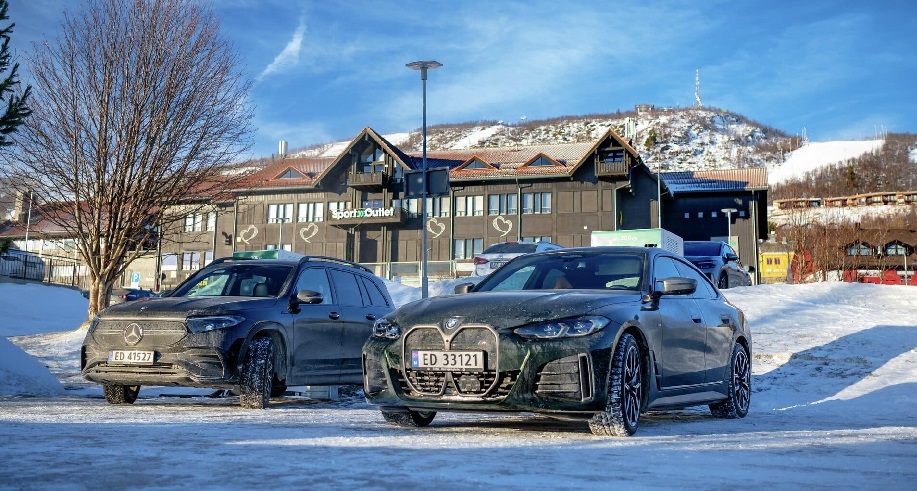In August, new car sales in Norway saw a slight increase compared to the same month last year, but recorded the highest share of electric vehicles (EVs) ever for a single month: over 94% of all newly registered cars were electric.
This surpassed the record set in January when the EV share exceeded 92% for the first time.
A total of 11,114 new units were registered in August, just 31 more than in the same month last year. Of these, 10,480 were electric, representing nearly a 13% increase from August last year.
There was a significant decline in all other types of cars, with plug-in hybrid vehicles experiencing the largest drop in August, at 77.9%.
This aligns with Norway’s tax policy, which exclusively favours electric cars.
“No other country in the world is experiencing the EV surge that we are currently seeing in Norway. If this trend continues, we will soon be on track to meet our goal of 100% zero-emission vehicles by 2025,” says Øyvind Solberg Thorsen, Director of the Norwegian Road Federation (OFV).
“EV enthusiasm has long been high in Norway, and strong incentives have been crucial in reaching where we are today. Just look at Sweden, and you can see what happens when incentives are removed. There, EV sales have dropped significantly, and the situation is the opposite of what our own authorities aim to achieve,” he adds.
The electric vehicle share for the year so far is also at a record high: out of a total of 78,832 new cars registered this year, 68,435 are electric, equating to a share of almost 87%.
“However, there are still 13% who choose various types of petrol and diesel cars. So, there remains a significant portion who feel that electric vehicles are not yet the best solution,” indicates Solberg Thorsen.
He believes that the increase in new car sales in August may be linked to a certain optimism and a slight improvement in people’s finances.
“At the same time, an important part of the explanation is that it simply does not pay to choose anything other than EVs in Norway,” he adds.
Pragmatic Car Choices – The New Normal
New car sales in both August and for the year as a whole show that new car buyers are exhibiting much greater moderation compared to a few years ago when interest rates were very low and the general price level was lower.
Almost all car models in the Top 10 list cost under 600,000 kroner.
With a few exceptions, it is mostly practical and typical family cars that top the list.
“Cars in this price segment seem to be the ‘new normal’ now. Not many people are putting down a million kroner or more for a new car in 2024, as was the case at the beginning of the 2020s,” says Solberg Thorsen.
However, it is worth noting that the ‘average car’ this year costs about 200,000 kroner more than it did five years ago.
Decline in the used car market in Norway
The number of ownership transfers for passenger cars, just over 333,000 at the beginning of September, is now 3.8% behind last year.
Despite this decline, used car sales remain at a historically high level.
This indicates that many people are in the market for a newer car.
The moderation is also reflected among those who choose a used imported car.
By the end of August, around 4,000 passenger cars had been imported to Norway.
These are mainly standard brands and models, predominantly electric vehicles, which already have a strong presence here but can be brought to the country at a good price despite the low exchange rate.
Momentum in van sales
New van sales fell by 18.1% in August compared to the same month last year, but so far this year, van sales have increased by around 14%.
Diesel vans hold a nearly 70% share, and so far this year, 24.8% more diesel vans have been registered compared to the same period last year.
The share of electric vans is just under 30% , primarily due to the fact that electric vans still do not meet the needs of everyone requiring a commercial van. Issues include insufficient payload capacity, limited range, slow charging, and high prices.
However, the selection is improving, which could lead to an increased market share for electric vans next year.
Trucks becoming electric slowly
An increasing number of new trucks are coming with charging cables instead of diesel tanks.
Of just over 3,000 new trucks over 16 tonnes, the proportion of electric ones so far this year is nearly 7%.
In terms of numbers, this represents a 57% increase compared to last year.
“We are now seeing a clear trend of the truck fleet slowly becoming electrified. Although the share is still low, it is moving in the right direction. This shows both a willingness to adapt in the industry and that the focus on electric trucks is gaining momentum among manufacturers,” says Solberg Thorsen.
He believes that transport buyers will increasingly favour zero-emission vehicles, including heavy trucks, and that authorities will better support an efficient charging infrastructure for heavy vehicles.
“We might see both 10 and possibly 15% market share for electric trucks by 2025,” he adds.







